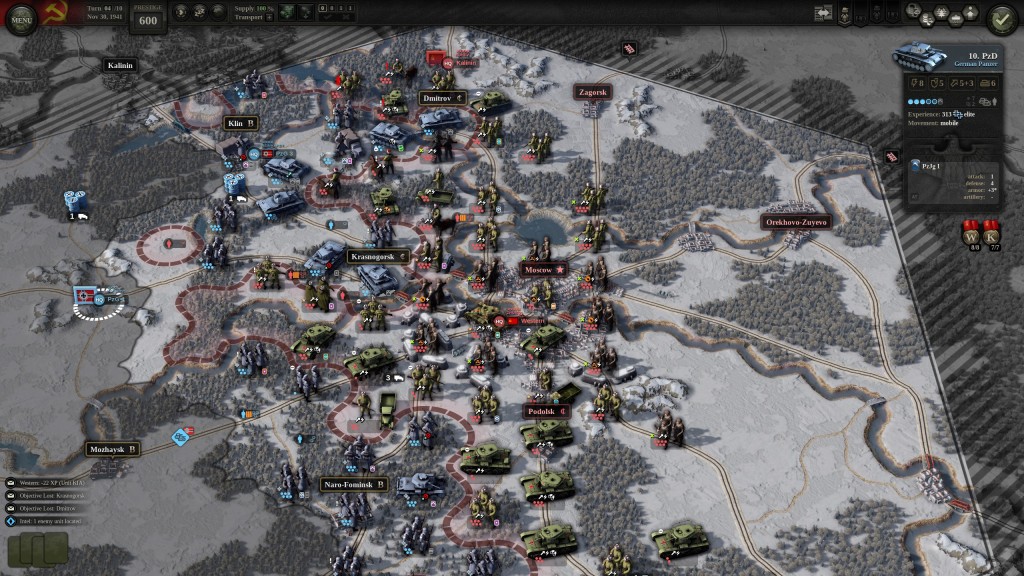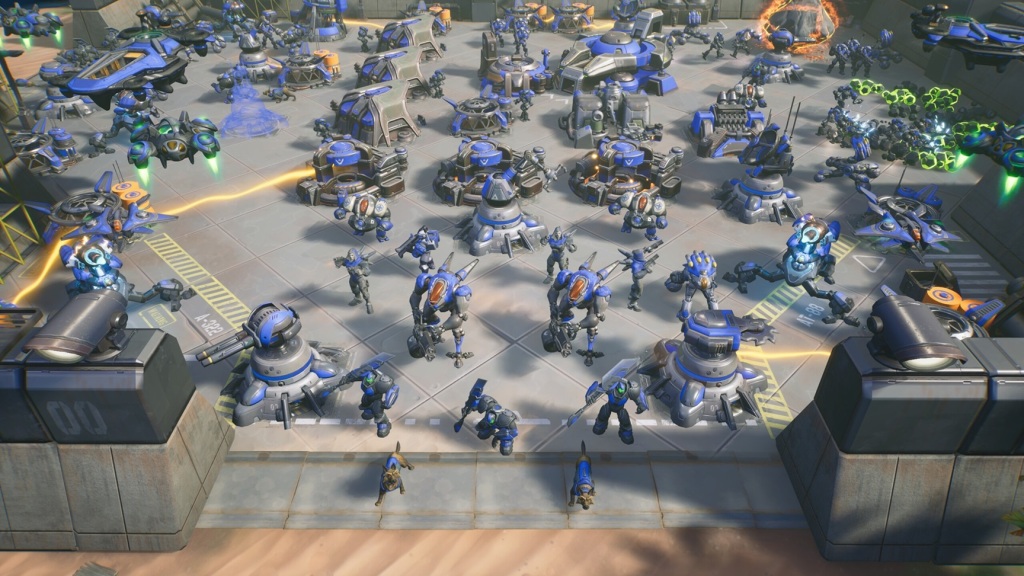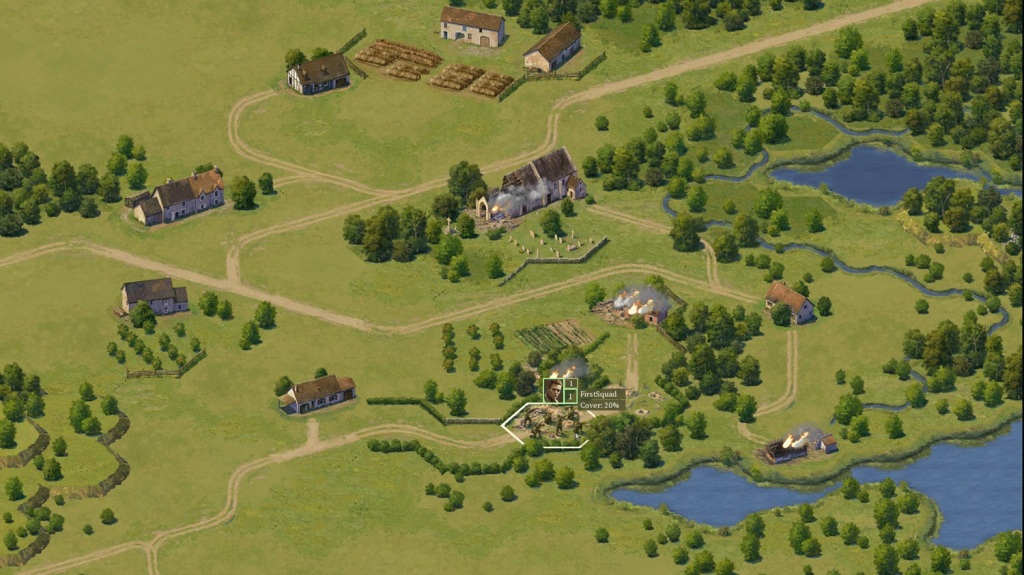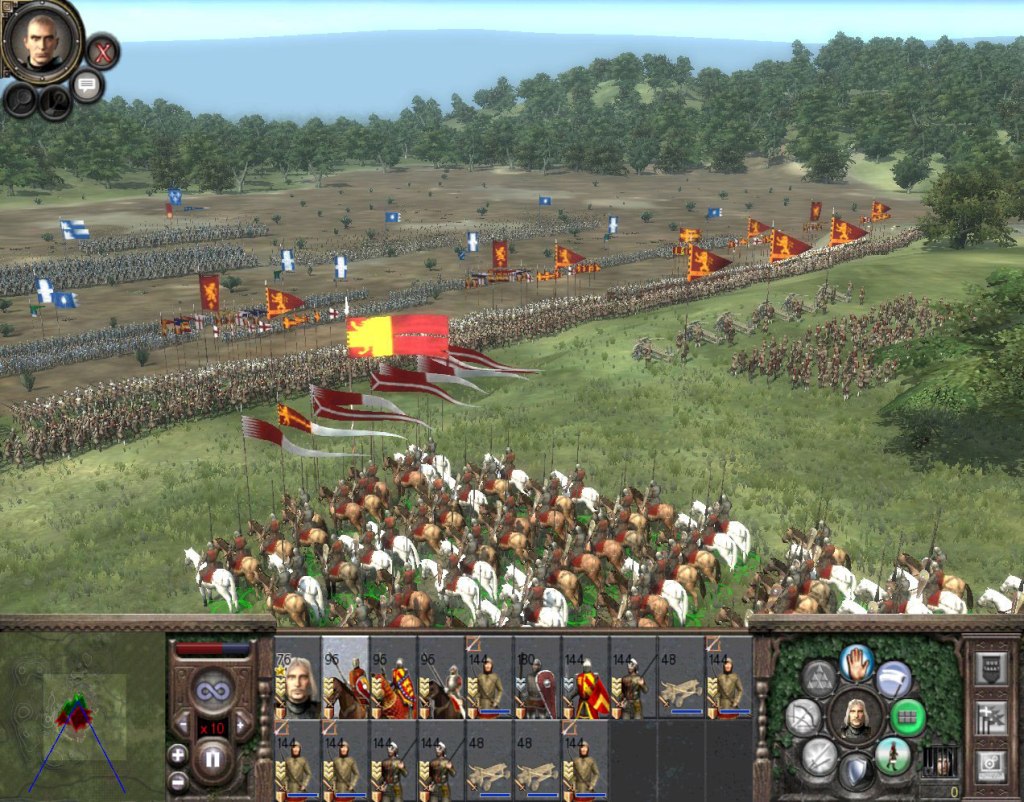
Privet, tovarishch! A new DLC for Unity of Command II is coming as swift and silent as the Russian winter. Moscow 41‘ is the most recent endeavour of 2×2 Games. These veterans of the Eastern Front bring their previous game combat experience to bear by creating compelling and varied scenarios that highlight some of the best characteristics Unity of Command II has to offer while also shining light on some of it’s darker and less favourable aspects. This latest DLC is releasing on the 31st of August and it’s going to cost soviet leaders a total of 6,99 USD or your regional equivalent.
The expansion has aspiring head-honchos commanding the soviet forces during the counter attacks taking place in the late months of 1941 early 1942. Opposing the player is an overextended, but highly experienced and well equipped Wehrmacht. This downloadable content packs 11 new scenarios with several variants, a new Soviet Guard unit and two new specialists- the Ski Troops and Divisional Gun. One more card is added to the deck and it goes by the name of Artillery Preparation. These are run of the mill additions to be expect from a paid expansion. Nothing to write home about but decent enough to warrant some attention. Despite that, and I had to do a double take on this: it’s really necessary to point out that the two previous expansions, Barbarossa and Blitzkrieg ’39 arrived with a lot more content than this. With the first bringing 23 new scenarios and the former adding a whopping 50 new units types for Poland, France and the northern european countries.
The scenario variety is the best thing this expansion brings. The vast expanse of the Eastern Front lends itself to large scale frontal assaults, sweeping flanks and frontlines that sway organically back and forth. I’m glad to say Moscow 41 does not disappoint in this department. The early moments of the campaign see the Soviets outmaneuvering the German forces by aggressive advances and daring raids deep into enemy lines to cut them off supplies for a couple of turns to weaken their ability to fight back. These scenarios can play out in several different ways according to specialities deployed and cards available, this gives the game a much needed sense of dynamism, more on that later.
And despite the vast sway of territory available, some moments of Operation Barbarossa delved into atrocious meat grinders, with each inch of land being measured in bodies thrown against the unrelenting fire of machine guns and tanks. UoC design decisions are ill suited for this kind of fight, with units lining up for miles behind one another waiting their turn to fight. And with little to no room to move around it all becomes a chore. Veterans of the franchise know how much UoC worked to turn supply availability a main mechanic while making it interesting to interact with. Small-ish scenarios with big unit counts remove some of this emphasis in supply availability, especially when you’re on the defense, but that’s what you get when squeezing History into the mold of game mechanics. Despite being unavoidable, it’s an easy flaw to overlook. If you’re unfamiliar with how supply worked, just have in mind that when the original Unity of Command came out, it was praised by how easy it made to manage supply lines! Yes, we wargamers are a fun bunch. To help you visualize, UoC unit movement needs to be kept in check to make sure every single troop is supplied to its fullest potential to be effective in combat. Units without supplies will have no ammunition left to fire and no food to eat, so they’ll fall faster than autumn leaves. This creates a fun balance by punishing overly aggressive and careless playstyles by cutting off their ability to fight and also overly defensive players by subjecting them to the ever looming threat of encirclement and loss of initiative.
Moscow ’41 isn’t without its flaws. There exists- still- the nagging feeling that I’m playing a puzzle-solving game masquerading as World War II military strategy. Frustrating situations such as losing a mission in the last turn while obliterating the entire enemy offensive and permanently crippling the opposing forces is some of the worst consequences this kind of restrictive design can bring. Few things feel as awful as spending one and a half hours meticulously moving units around to lose the mission to what was, essentially, an AI bamboozle. Here: second mission of the campaign, the Panzer Division advancing on Rostov is cut off from it’s supplies and the German forces retreat behind the river line, never to recover. To the north, an overextended russian line fell to a lightning and precise strike towards the city of Voroshilovgrad in the last turn, totally out the Fog of War. Now, I don’t have any problem with this, in all honesty, but the fact that there was no way that could be a viable strategy in the long run and it was just the AI rushing towards an objective just because, left me with a serious salty taste in my mouth. To the game’s credit, it actually allows you to react by extending the turn limit at the expense of prestige points. And yes, sure. It was an overlook on my part and entirely my fault those lines ever overextended but that spearhead towards the objective made no military sense and served only to rush an objective. It’s this very strict objective focus gameplay and skin-tight timing that makes me feel like I’m playing chess or gammons rather than commanding an army.
Despite those grievances, my failure can also be read as a testament to an AI that’s ruthless, always looking for the unprotected jugular, smashing it’s forces against the weak spots in the players lines and striking deep. Unity of Commands’ AI pulls no punches. Always looking to shatter the weak link or encircling overextended units and formations. It’s a brain scrambler and it shows or gives no quarter. If you are a wargamer looking for a challenge, look no further.
To end this small review, I just want to let newcomers know that graphically speaking, Unity of Command II (and I) is the Mona Lisa of wargames, with maps drawn to meticulous detail and unit counters strength and specialities being recognizable from afar. A masterclass in readability, that’s for sure.
If a beer and pretzels kind of wargames is what you’re looking for to entertain during these hot summer nights, then Moscow 41 will do you just that. In the end, Unity of Commands’ newest expansion, Moscow ’41 is a worthy, fun and enjoyable take on the hex and counter formula that has a proven track record of being recognized by many has the best entry level wargame in the market, and having more of that is a good thing, as far as I see it. You can never have too much of a good thing.
Follow Strategy and Wargaming Socials
Strategy and Wargaming needs you to follow its socials. Are we the best strategy gaming website around? I would say so. Heck, what other options do you have? The Wargamer? Please.
So why not give us a follow on the cesspool that is Twitter, or join the 1000 other geriatric patients on Facebook? Or subscribe down below? Or maybe do everything? I don’t care, I’m not your grandmother.
If you enjoyed the article, consider buying me a coffee!
I’ve been running Strategy and Wargaming at my own expense since 2017, with only the ad revenue to cover the hosting, with everything else being done by me. So, if you’re an avid reader, you can afford it, and want to support the website, please consider Buying Me a Coffee by clicking this link, for as low as one euro! If you do, just know that you’re helping out a lot and contributing so that Strategy and Wargaming can continue growing!










Leave a comment